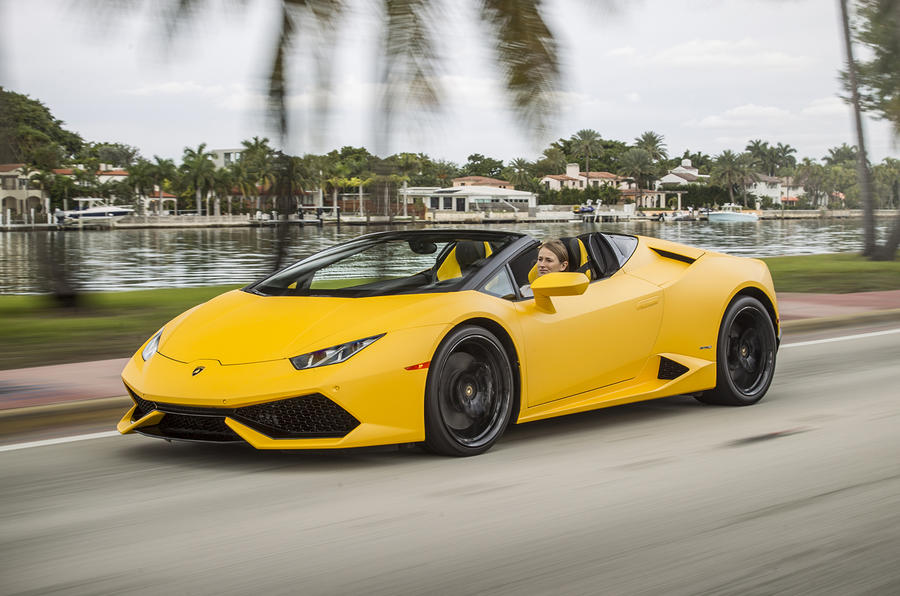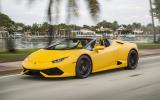So, does it feel fat and wobbly on the road? Er, no. Not remotely. On the roads around Miami, which, granted are not best suited to testing the limits of this car, it feels strung taut. There’s barely a whiff of body flex, regardless of the size of pothole or undulation. Essentially, unless you’re blessed with regular track access, it’s unlikely that what small compromises in rigidity there are will even encroach on your consciousness. Not even a little bit.
Our car was on standard dampers, which are really effective. The car bucks and shimmies over really scruffy roads, but it never corrupts the tyre contact with the road or resorts to the wince-inducing, wooden-feeling bump absorption that some hardcore sports cars can suffer from.
What could well annoy you is the rear visibility, since the rear deck of the Huracán Spyder is so high that the rear-view mirror barely shows you the roofline of the car behind. Other niggles could be that taller drivers will want for a big more leg room, but let’s face it, by any supercar standards, and particularly by Lamborghini’s standards, this is a car you really could live with every day.
Even with the roof down, the clever aero work - which includes buttresses behind the trailing edge of the window to suck the air back across the deck rather than letting it recirculate into the cabin - keeps things civilised. Put the roof up and you can see from the silhouette of the car that the airflow will be fairly uninterrupted, and sure enough, wind noise is impressively subdued. You still get a fair amount of rumble from those fat tyres, and the exhaust echoes gently in the background, but you could live with this.
In fact, anyone driving a Huracán is going to wallow in the noise. It’s a vehicular amphitheatre - an acoustic bonanza of popping, burbling, crescendoing, ravening V10 engine noise. It’s not an exhaust note; it’s an overture, and opening the roof only lets you enjoy it more.
The powertrain is a delight to use in everyday stuff or in more spirited use. Twitch the appropriately large manual paddles and you feel instantly in charge of the gearbox, as it quick-fires up or down a gear, letting you make the most of the V10 with its joyous lack of inertia and free-revving nature.
Maybe there isn’t the detonation of gut-wrenching mid-range acceleration that you get with the turbocharged McLaren 650S or Nissan GT-R, but there is real, deep satisfaction in using the long, crescendoing rev range of this engine. And whatever you compare it with, give it everything in a Huracán and it feels savagely, hilariously fast.































Add your comment